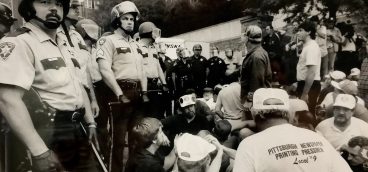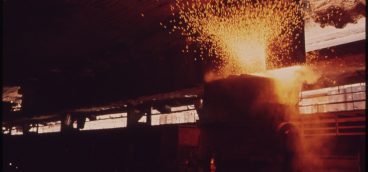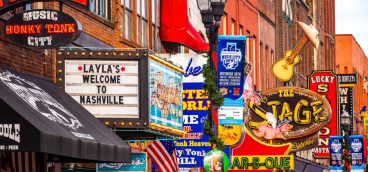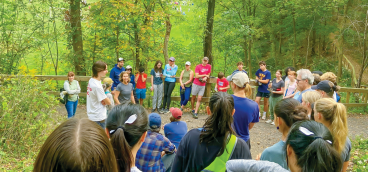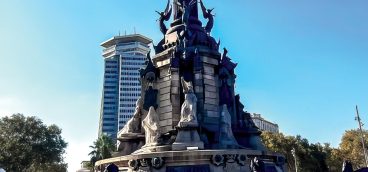Seeking a Safe, Welcoming and Thriving Region

It was a snowy day in Pittsburgh in 2024 when a City truck slid into a guardrail. No one was hurt, but it caused risk and damaged the vehicle. Asking “why” yielded a typical answer, “duh, it was icy.” But Mayor Ed Gainey had promised to be serious about a safe, welcoming and thriving city. Part of that promise was to make sure City workers don’t get hurt. So, the process that the Mayor and his team created to eliminate safety incidents continued.
People, as they often do, jumped to expensive solutions instead of solving the problem. “If we bought a more powerful truck we could have powered through the skid.” But leaders trained in root cause problem solving instead led the hard work of solving the real problem. “WHY, on this patch of road, on this day, was it so icy our truck skidded off the road?” They went with their workers to the site and discovered the road was covered in ice because water was pooling there. Water was pooling because a culvert under the road was blocked. The culvert was blocked because it was overgrown by vegetation. And it was overgrown by vegetation because there was no standard work for preventively clearing drainage culverts.
Within hours this culvert was cleared, eliminating risk not only for City trucks, but for all drivers who use this road. Within days teams found everywhere else in the city where these conditions existed. And within weeks, standards were created to preventively clear culverts, so this root cause would not hurt to anyone in the City again.
But the magic came next. Debriefing the learning with senior leaders, you could see the light bulbs go on one by one. This was the same root cause as the collapse of the Fern Hollow bridge…
The Path to a Region of Excellence
Many have accurately described the region’s failure over the last 20 years to be an attractive and welcoming place for people and the businesses who employ them. At the Pittsburgh Futures Collaborative, we are dedicated to creating the first region where every individual thrives. To get there, we have been asking community members the question “what would make our region so great that people and businesses clamor to be here?” People have told us three things they want for themselves and their families and friends:
- To feel safe wherever they go.
- To be able to develop themselves to thrive, in large part by engaging in meaningful work that pays enough to meet all their immediate needs and to build wealth to meet future demands of their families.
- To feel included and welcomed in all neighborhoods where they live and wherever they go for work, social interactions, and entertainment.
In short, a great region is one where every individual can live to their full potential and thrive. Inspired by our mentor, Paul O’Neill Sr., who led some of the great organizational transformations of the 20th century, we seek to apply the principles of habitual excellence to solve the problems that advance this vision.
Fortunately Paul, along with his mentors at great organizations like Toyota, left a blueprint for habitual excellence for any organization or collection of organizations that want to pursue this path. It starts with respect for every individual, grounded in building the systems to deliver perfect safety.
That is why, when he stood before his leadership team and investors in his first days as CEO of Alcoa in 1987, Paul declared a single goal: “we intend to make Alcoa a place where no one ever gets hurt at work.” His employees thought he was lying – that when he learned how hard it was or when profits were at risk, he would focus on financials. Many shareholders thought he was crazy and sold the stock, only to quickly regret it when the return rocketed to the top of the Fortune 50 and stayed there for more than 15 years.
What did Paul know that others didn’t? And what does any of this have to do with creating a region where everyone can thrive? Paul realized there are two types of leaders. Traditional ones create top down strategies and try to command their way to excellence. Those who understand what is takes to lead complex organizations to produce markedly better results take a different approach: They:
- establish a foundation of safety and respect for people
- aim for perfect in everything they do
- make the workplace safe to try and fail small
- trust their people to grow, solve problems and innovate, informed by much deeper knowledge of the details of daily work
These leaders build the systems and culture to tap their people’s innate innovative and entrepreneurial spirit, and enable them to constantly improve work safety, quality and efficiency simultaneously. And they demonstrate that there need not be trade-offs between these improvements and high wages and profitability because, where the untrained eye sees scarcity, there is actually abundance.
This brings us full circle to the promise of Pittsburgh Futures for our region. We believe in vision, and hard-nosed, practical problem solving. Any problem can be solved. But it will take the same things that Paul taught us:
- An unarguable, values-based goal – ideally the goal of perfect safety – that all of our leaders can rally around and learn together to achieve.
- System diagnosis and design skills that are rare, but easy to learn and use when taught in real life problem solving.
- A common “way” to solve problems across organizations using universal principles.
- A safe environment to practice and learn.
Fortunately, Mayor Gainey has led the way and begun to create the basis of habitual excellence within the workforce of the City. Toyota has a saying, “Having no problems is a problem.” Without problems to solve there is no learning and growth. Typically, top political leaders don’t have the courage to confront reality, but Gainey has taken a different approach. This leads us back to the first story about safety and bridges…
Building a Culture of Safety and Learning
The Fern Hollow Bridge collapsed just three weeks into the Gainey administration. The first reaction of many leaders would have been to find someone to blame, throw them under the bus, and continue business as usual. Instead, the administration immediately worked to understand what process actually caused the bridge to fail. Just like with the sliding City truck, they conducted a “5-Why” investigation. Why did the bridge collapse? Because a support structure broke. Why did the support structure break? Because it was corroded. Why was it corroded? Because water, salt and debris were pooling inside the structure. Why? Because the drainage mechanism was clogged. Why? Because there was no assigned responsibility or preventive maintenance standard work for bridges.
Administration after administration for decades had inspected bridges, monitoring the deteriorating conditions of their structures and occasionally closing whole structures for renovations and repairs, but not one of them had enough foresight to solve the problem to root, which is always the safest, cheapest, and most reliable way – doing the right things right the first time. Had they done this, people would have been protected, we would have saved millions of dollars just on this one bridge with dozens more stable structures across the city. Using the Pittsburgh Futures Collaborative ideas and systems of habitual excellence, the Gainey administration is the first in decades to create the culture and systems that can lead to excellence, applying these lessons to bridges AND all other safety events.
Results
Results are all that actually matter. There are proven and repeatable methods to help leaders aim their organizations toward perfect results in everything they do and then enable their people to make rapid progress at unprecedented rates. The sign that habitual excellence is beginning to take hold is measurable improvements of 30-50 percent year over year on a variety of measures unrelated to each other, with financial benefits that follow. Examples from the City so far include:
- Worker Safety – The goal is zero harm for city workers. In just two years the worker harm rates have gone down by a staggering 59 percent in the pilot department (DPW) and 31 percent across the entire City workforce. This means roughly 100 fewer City workers are being hurt each year, respecting their humanity, leaving more people to perform vital city services, and saving pain and cost for all. Money is not the object, but driving safety also saved the City almost $10 million over two years in paid claims, resources that can be used to better meet resident needs.
- Violence Reduction – The goal is to eliminate violence, and the Plan for Peace has taken a root cause approach, aiming to get upstream and interrupt violence before it occurs. Violence has been decreasing in the nation as a whole, but in Pittsburgh the rates have plummeted, down 40 percent in the last 2 years versus 25% nationally.
- Safe Transit – Before 2022 the City literally had no way to ensure important sections of sidewalk were walkable because individual property owners own their own sidewalks. In just three months five City departments collaborated on a process to work with property owners to repair whole sections of sidewalk. This process has led to 4 miles of sidewalk repair in the last two years around schools and public transit that have led to measurable improvements in safety and student absenteeism. This is part of a much larger “Vision Zero” initiative for traffic harm.
- Affordable Housing – The Pittsburgh Land Bank was formed in 2016 and had transferred zero properties by the time Mayor Gainey took office. In the last year with the contributions of many close partners, more than 150 properties have been freed for development.
The City just received external validation of this extraordinary journey that began under Mayor Peduto and accelerated with the help of the Pittsburgh Futures Collaborative under Mayor Gainey. The City of Pittsburgh achieved Gold Certification from What Works Cities, a Bloomberg Philanthropies and Results for America program that certifies cities for leading with best practices in using data and evidence to inform decisions. Pittsburgh joins an elite group of just 38 cities across the Western Hemisphere that are Certified at the Gold or Platinum level for outstanding systems to use data to drive results, including Boston, Buenos Aires, Argentina, Charlotte, Bogotá, Colombia, Detroit, Kansas City, San Francisco, and Washington, DC.
A Region of Habitual Excellence
Our vision does not stop with the City. Every key problem hampering universal thriving takes additional partners who agree on the goal and the way. We have begun work with Pittsburgh Water to drive “Safe People, Safe Water.” Housing insecurity and mental health require the County. Developing skills for social and economic success requires schools and universities. And ensuring good health requires our private sector to support healthy air, food and water, and our health systems to help us prevent disease and treat our illnesses effectively and without waste. For 2025 our resolution is to nurture partners to solve more critical human needs and create forums where leaders can set common goals and embark on problem solving across our silos to make this the first Region of Habitual Excellence.
(Paul O’Neill Jr. is a founder of Pittsburgh Futures Collaborative, Value Capture LLC, and the O’Neill Alpha Fund. Geoff Webster is a founder of Pittsburgh Futures Collaborative and Value Capture LLC and provides advisory support to leaders of Habitual Excellence.)


